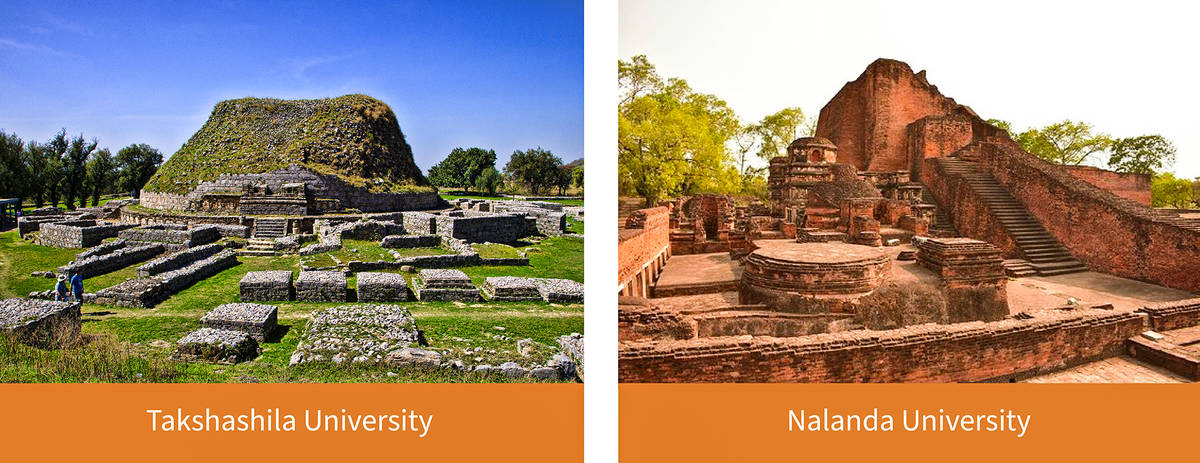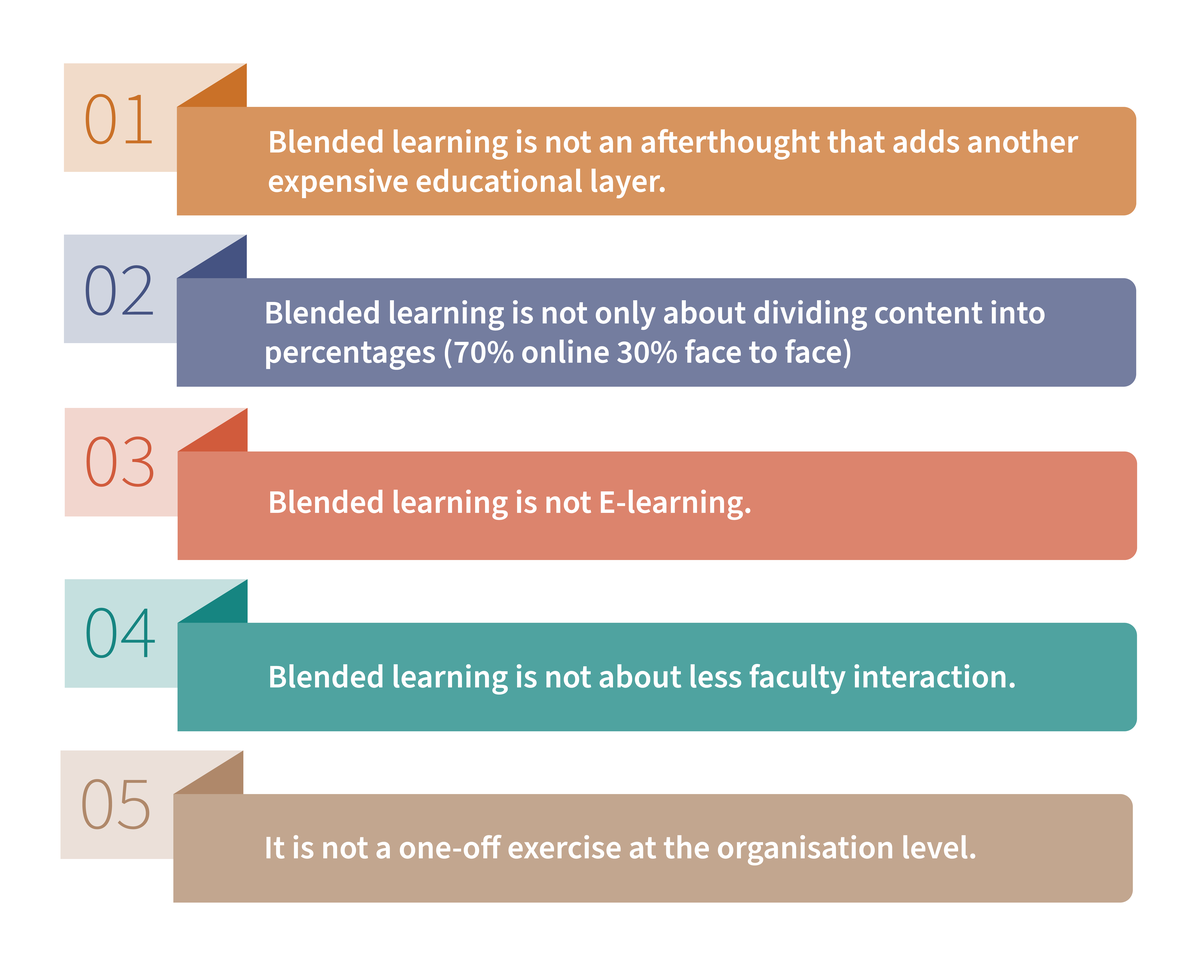Demystifying Blended Learning: The Indian Context
Blended learning is transforming the learning landscape. Blended learning places learners in control of their learning journey and leverages a variety of learning modes to make the process of learning accessible and engaging.
India is undergoing a transformational process in its learning ecosystem as it strives to find the best suitable solution to the country’s needs. Mission Karmayogi, the National Programme on Civil Service Capacity Building, exemplifies this shift. In this context, the relevance of blended learning strategies is being recognised. Central/State Training Institutions are being nudged and supported to digitise training content and diversify learning methodologies. However, little effort has been made to route the underlying principles of blended learning strategies through the ancient Indian learning ecosystem.
This three-part series blog tries to embed a blended learning approach in India’s age-old learning culture. It introduces blended learning frameworks and models as the primary learning solution to the challenge of capacity-building of public officials.
This blog underlines four distinctive features of India’s progressive learning system- Learning for Wisdom, Learner-Centered, Holistic Learning, and Applied Learning- and establishes the criticality of a learner-centered shift while designing learning solutions for modern learners.
The Indian Learning Landscape – Historical Perspective
Since time immemorial, India has had a very rich learning landscape. It is believed that in ancient India, learning was passed down orally from one generation to the other. With the development of writing systems, the writing component was added to the learning ecosystem. India observed continuous progression in the learning systems from the times of Ramayana and Mahabharata till its maturity.
The Gurukul system followed the guru-shishya Parampara which ensured that the houses/monasteries of the Gurus were the learning centres. The learners spent a part of their early life with their gurus to learn from them. The Gurukul system of learning primarily followed oral and written methods but also included the practice of learning as a part of the curriculum.

There are several instances of Instructor-led Learning and Self-Directed Learning in the Gurukul system. The well-known story of Arjuna and Eklavya is a prime example of this. On one hand, Arjuna experienced a conducive learning environment created for him to follow the Guru’s instructions and segregate the theory and practice of Archery; on the other hand, Eklavya’s learning was purely an example of Self-Directed Learning and in the process of self-paced, self-driven learning how one can achieve a level excellence that can be better than the best in the business.
Then there are examples of fast-paced learning from another episode in the Mahabharata where Arjuna interacts with Lord Krishna, as a seeker of knowledge. Having given up on the war against his relatives, Arjuna turns to Krishna for guidance, and Krishna facilitates a learning process that is fast-paced and to the point.

From the method point of view, this can be considered fast-paced learning at a relevant time for the learner to move to the next level of excellence in performance. Over time, this learning ecosystem progressed and institutions like Takshashila and Nalanda rose to prominence. Both these institutions are classic examples of providing the learners with choice-based learning at a self-directed pace leading to achieving mastery in a particular domain. For example, Nalanda University had utilised collaborative learning methods like tutorials and discussions to facilitate learning. Opening up towards the learning-for-all approach was another highlight of these institutions. Both of these institutions have at least three different types of learning methodologies to be explored by the learners: explanatory lectures, debates and practice-based learning.
It will not be wrong to say that India as a country has experiences creating as well as adopting progressive learning systems, a learner-centered system with elements of applied holistic learning, at different time interventions with the end result being learning for wisdom.
With changing global context and scenarios, the learning landscape kept on changing. A major change was seen during the industrial revolution where the learning ecosystem went through a global overhaul as the duration of learning became shorter and remained focused and limited to the job at hand. The learning process became more specific to the requirements of a particular job in the industry. The impact of this was witnessed in India during the British rule, and a similar model was followed. These changes had an impact on the age-old learning culture of the country and on how the country aspired its learning journey to be. This narrow conception of learning design- being limited to equipping tasks at hand- has resulted in compromises on several crucial aspects of progressive learning system. Following the Nalanda and Takshshila episodes , India has struggled to adapt to the changing learning needs. There have been few notable exceptions in the higher educational institutions such as IITs and IIMs.
Learning Design for Modern Learner
Throughout the history of human civilisation, there have been decisive moments like the discovery of fire, the invention of the wheel, steam engines, etc. that have heralded a major transformation in our individual and collective lives. The information age and emerging technologies like big data analytics, machine learning, etc. have transformed the way we commute, consume and interact. However, most of the learning designers have not yet leveraged emerging educational technologies to keep up with the changing demands of the modern-day learning ecosystem such as avenues for reflection and collaborative problem-solving.
Today’s professionals require shorter and more accessible ways to upskill themselves throughout their careers. Therefore, the first pressing priority is a new learning design in terms of learning products that provide anytime, anywhere learning. Secondly, the changing landscape tends to challenge the role of trainers/teachers/faculty members as the information is not necessarily the domain of these positions, therefore a shift towards transformation in the roles of trainers/teachers/faculty members to become the facilitators of the learning process is required. Thirdly, because the first two changes are so integral, the current set of andragogy, pedagogy, didactics or methods may no longer suffice. As a result, a solution is required which entails a fresh set of didactics and methodologies capturing the majority of a learner's learning styles by bringing together the Head, the Hand, and the Heart in this space.
Blended Learning – A Potential Solution
Blended learning provides strategic opportunities to address contemporary challenges while meeting the learning needs of modern learners. Blended learning in its true sense could be one of the solutions to combat such challenges, however, the Indian culture of learning must be acknowledged and customised in the Indian context.
Blended learning is a widely used term with an even wider range of definitions available. As the concept is ever-evolving, it has to be adapted to the requirements of the learning systems. Blended learning is a coherent design approach that integrates the strengths of face-to-face and online learning so that the strengths of each are blended into a unique learning experience that is congruent with the context and intended educational purpose. It represents a paradigm shift in the following ways:
- Flexible and accessible learning experience: It allows for a variety of learning modes. It creates flexible spaces where learners can choose when and where they learn. This flexibility may comprise varied course resources, types of learning activities, and media used to support learning. It enables students to overcome the limitations of time, location, delivery method, and the communication style offered in many face-to-face courses. Thus, it empowers learners to exercise more control and ownership over their learning.
- Engaging and self-directed learning: It drives a shift in learning culture from being instructor-led to learner-focussed where learners are actively engaged and encouraged to construct knowledge through interactive and multimodal tools and active learning techniques It emphasises self-directed and collaborative learning.
- Social and informal learning: It underlines the critical role of facilitators in providing learners with timely and relevant feedback and encouraging peer learning. It provides several options for the facilitators to select the most convenient methods and tools based on learner needs, preferences, and constraints.
It is important to define what blended learning is NOT:

Conclusion
Based on the Indian experiences and global changes that have impacted the learning landscape in India and around the world, it will be worthwhile to revisit the roots, and seek inspiration from the Indian experiences (how the learning was more comprehensive, holistic, and life-long process) and combine these with the blended learning concepts to provide a customised solution to the different players in the domain of Indian capacity development sector. Blended learning has the potential to trigger the transformation in the Indian learning landscape and help learners to remain relevant to the changing environments, and demands of various sectors.
To accomplish this, it is essential to understand different blended learning models and approaches and identify the most relevant ones applicable to the Indian context. Part two of this blog will explore the framework and models to integrate in-person and online components.

.jpg)

Add new comment